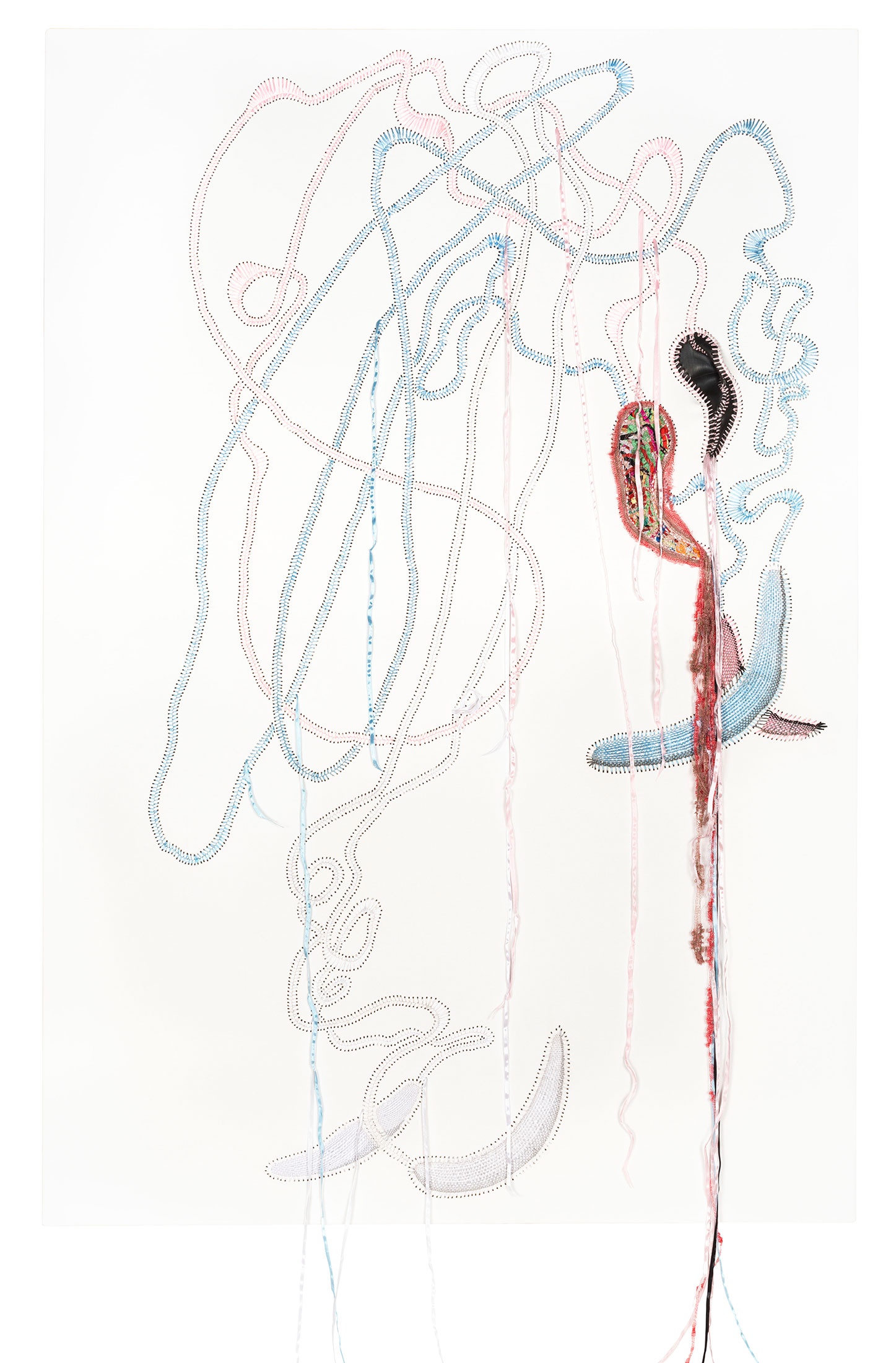Nicholas Hlobo

Endothelin is a detailed composition of canvas cut and sewn with the precision of a surgeon’s knife and needle. Taken apart only to be put together, Hlobo’s painting is a ritualistic gesture of restoration, the surface embroidered with ribbon along the seams of each slit. Intricately worked, the canvas evokes organic and corporeal images – the wandering lines the filigree of nerves or the mycelium of mushrooms. To the artist, his paintings are as an embryo only just beginning to take shape, where “all that is readily discernible are the traces of veins.” The work is named for a peptide – an amino acid compound.
b.1975, Cape Town; works in Johannesburg
Nicholas Hlobo is an artist of rare dexterity. In turn monumental and intimate, heavy and weightless, his works evade the themes ascribed to them, resisting facile explanation. Their titles only augment their uncertainty. Some read as unclear warnings – Zophalala futhi (trans. They will fall apart again), Unojubalala (trans. She is pale) – others incline towards the metaphysical; Izithunzi (trans. The Shadows), Isisindo samadlozi (trans. The weight of the ancestors), Uvuko (trans. Resurrection). Hlobo moves fluently between performance, installation and painting (the imperfect word he uses for his hybrid works on canvas). In each, there is a tactile engagement with material – be it rubber, leather, copper wire or ribbon. For the artist, these constituent parts are metaphorically charged, extending beyond their physical bounds. Assembled together, they become anthropomorphic abstractions; no longer threads and substrate but veins and skin. “In truth,” Hlobo says, “we’re all cords, plugs and connecting points; some split, some broken. Yet the body mends itself, the body continually grows. It’s a never-ending process, it’s a progression – and the mind does the same.”